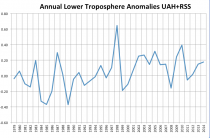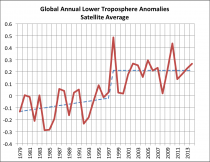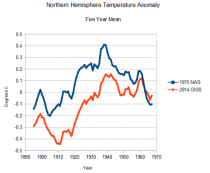Last Friday, NOAA and NASA officially declared 2014 as the hottest year in 134 years of record keeping, with an expected annual global temperature 0.68C above the 20th century average according to NOAA’s ‘dataset’.
In 2014, seven out of 12 months tied or topped previous monthly global temperature records. Oceans in particular experienced record warmth, with seven consecutive months- May through November - setting new records for surface ocean heat. Most importantly, 2014 sets the new global temperature record in the absence of an El Nino, a phenomenon which raises global temperature. Many of the previous hottest years on record have occurred during El Nno years, including 2010 and 2005, which now share the record for second hottest year.
As for the U.S., 2014 saw five new monthly heat records and was the 18th year in a row where the nationwide annual temperature average was hotter than usual.
ICECAP Note: Does this look like a warm year for the contiguous US?. After the coldest December to March since 1872 in places like Chicago and cool spring, July and 16th coldest November? This is the data that goes into the models and reanalysis - it is without the homogenization and other adjustments that NOAA and NASA use to support the politicos. Remember in this projection the higher latitudes are stretched. 90N and 90S are just a points of land but are stretched to appear as long as the equator.
And Alaska, Arizona, California, and Nevada each had their warmest year on record. Notably, California’s annual average temperature was an amazing 2.3C (4.1F) above the 20th century average, shattering the old record of 1.3C (2.3F) by 1C.
The record heat in 2014 is just the latest development as global warming turns up the heat at an alarming rate. February 1985 was the last month where global temperature fell below the 20th century monthly average, making December 2014 the 358th consecutive month where the combined global land and ocean surface temperature was above average. Each of the last three decades has been much warmer than the decade before.
On Friday, climate experts from NOAA and NASA will announce the new data on 2014 global temperatures during a media teleconference at 11 am EST. Media can participate by calling 800.593.7128 and the password “globe.” Or listen to the livestream.
For a more comprehensive run-down of the science, please check out our new backgrounder online here
For additional insights, the following experts are available for comment:
Michael Oppenheimer - Albert G. Milbank Professor of Geosciences and International Affairs in the Woodrow Wilson School and the Department of Geosciences at Princeton University.
Email: omichael@princeton.edu
Phone: 609-258-2338
Radley Horton - Associate Research Scientist at Columbia University[s Center for Climate Systems Research
Email: rh142@columbia.edu
Phone: 646-320-9938
Michael E. Mann - Distinguished Professor of Meteorology at Penn State University
Email: mann@psu.edu
Phone (cell): 814-777-3136
Climate Nexus is a strategic communications group dedicating to highlighting the wide-ranging impacts of climate change and clean energy solutions in the U.S.
---------
In actual fact, it was the 9th warmest since 1979 in the far more accurate and non contaminated and non manipulated satellite data sets (RSS and UAH merged).
The pause in temperatures the last 18 years has occurred even as CO2 has continued to rise over 11%.
Winters have cooled for 25 years here in the United States, accelerating in the last decade and this year will continue or even increase the downtrend. The only reason that they can make the claim that every month since 1985 is warmer than average is that they cooled off the early 50 years of the century by 0.3F or more degrees with their ‘corrections’. See the difference between the National Academy of Sciences temperatures from 1975 versus the 2014 NASA GISS plot courtesy of Steve Goddard.
By Anthony Sadar, Washington Examiner
Posted with author’s permission.
As the New Year dawns, old challenges hang on.
One of the biggest challenges relates to the ambience of climate-change science.
So many folks are invested in an expectation of disastrous geophysical conditions resulting from modern lifestyles that are fueled by ancient energy sources. So, the big money (in the trillions of dollars) is on the continuation of supposed wacky weather, hustled as proof of long-term, global climate change.
But here are five reasons to remain unconvinced that humans are culpable for such acts of nature.
1. Actual data trumps forecasts. No matter how you measure it, the global average temperature trend has flattened out over the past decade and a half. Even so, the tiny fraction of a degree increase in temperature expected for 2014 over previous years will be hailed as being the highest on record. Despite this almost meaningless increase, there is a distinct possibility that temperatures will be once more dropping as solar activity and ocean circulations relentlessly work to redistribute heat across the globe.
2. Carbon dioxide makes up only 0.04% of the atmosphere. Compare this small percentage with water, which is the dominant climate regulator. Water, in the vapor phase at 0% through 4% of atmospheric concentration and in the liquid and solid phases, is apparently the biggest climate controller on the planet.
3. The purveyors of a long-term human-caused global climate change catastrophe constantly confuse weather with climate and cherry pick data to aggravate public angst over future meteorological mayhem. This permits, for example, huckster politicians to push what is often referred to as “the social cost of carbon.” This phrase should not be confused with any balanced assessment, such as a traditional Cost-Benefit Analysis, which would likely put some much-needed perspective back into any reasonable deliberation of climate concerns.
4. No matter how brilliant climate prognosticators are, nor how sophisticated their algorithms and super their computers, they are far from knowing with sufficient certainty the far future. This is one reason they deserve a skeptical eye, for the allegedly absolute certainty of the “settled science” as the linchpin of the case made to the public.
5. Finally, real human misery requires immediate attention, and access to low-cost fossil fuels goes a long way to alleviating suffering. At least a billion people don’t have access to modern energy, living instead off truly dirty fuel sources such as smoky wood and dried dung. A mere one percent increase in so-called carbon pollution would be enough to lift up a billion of the world’s poor. As cheap, clean, abundant energy powers people out of poverty, high-cost policies empower and enrich politicians and their enablers, who hope to profit from carbon hysteria. Thus, the incentive for meaningful changes is weak, unfortunately given the powerlessness of those who would benefit.
So this New Year, for the sake of the Earth and its inhabitants, when it comes to climate futures, we need to resolve to invest in less profit-driven science, and be more guarded and less gullible with the diviners of disaster. More than a billion people will thank us.
Anthony J. Sadar, a Certified Consulting Meteorologist, is author of In Global Warming We Trust: A Heretic’s Guide to Climate Science (Telescope Books, 2012).

Pope Francis evidently has decided to make fighting global warming an important papal cause in 2015. He praised the United Nations’ climate treaty efforts in Lima, Peru; the Vatican has indicated he will issue an encyclical letter to the world’s bishops; he is encouraging the world’s 1.2 billion Catholics to take up the battle against climate change; and he’s planning to address the next UN climate conference in Paris to pressure world leaders to adopt a strong climate agreement.
The Vatican Pontifical Academy of Sciences may be behind the pope’s rising interest in global warming as a moral and political cause. Its chancellor, Bishop Marcelo Sorondo, said, ‘Our academics supported the pope’s initiative to influence next year’s crucial decisions. The idea is to convene a meeting with leaders of the main religions to make all people aware of the state of our climate and the tragedy of social exclusion.”
Many Catholics undoubtedly support the pope’s efforts and, unlike many of his critics, I would argue the views of the pope, a significant moral leader, should be considered as climate policies are shaped. As the leader of the largest Christian denomination in the world, he is charged not just with saving souls but also with alleviating the suffering of the world’s least fortunate, and with leading the Catholic Church in efforts to make the world a better place.
Having said this, I also know moral imperatives and public policies should be grounded in the best-available science, in the reality of the human condition, and in the state of both the planet and the people. Concerning global warming, the pope evidently has been badly misinformed and led astray.
None of the disasters asserted by climate alarmists to result from global warming has come to pass. Hurricane numbers are down, deaths from natural disasters have declined, sea ice is on the rise, and crop production is increasing. Climate models have yet to be validated, missing the lull in temperature rise for the past 18 years and the declining rates of sea-level rise for the past decade. Instead, the gap between temperatures projected by climate models and temperature observed in reality grows yearly.
Investor’s Business Daily has speculated the Vatican is itching to tackle climate change, despite the above-stated facts, because,
[The] Vatican… has been infiltrated by followers of a radical green movement that is, at its core, anti-Christian, anti-people, anti-poor and anti-development. The basic tenets of Catholicism - the sanctity of human life and the value of all souls - are detested by the modern pagan environmentalists who worship the created, but not the creator.... Big Green believes that too many human beings are the basic global problem. People, according to this view, are resource destroyers. Climate change, they say, is due to the overpopulation of Mother Earth.
The pope would do well to question the sources of his information and to recognize his efforts should be focused on alleviating the poverty and suffering of billions of people in the world today. The best policy to accomplish that goal would be alleviating energy poverty worldwide.
As a CNS editorial stated,
Alex Epstein argues, rather than taking a safe climate and making it dangerous through the use of fossil fuels, we have been transforming a dangerous climate into a safer, more manageable one for human flourishing.
Humans have long fought a war with climate, and to the extent we’ve won it has been through the use of technology, most recently including, fossil fuels.
-- H. Sterling Burnett
-------
A review and commentary on topical matters concerning the science, economics, and governance matters associated with climate change developments.
By Alan Moran,
January 2nd, 2015
Happy 2015
New Book on Climate Change
Climate Change: the Facts 2014, a recently published book which I edited and wrote one of the 22 chapters, Costing climate change.

Out Now: Climate Change: the Facts 2014, The following is my introduction:
Prompted by successive reports of the Intergovernmental Panel on Climate Change (IPCC), the issue of human induced climate change has become a dominant theme of world politics. This is especially so in Australia where it was famously called the greatest moral challenge of our time by Kevin Rudd. The issue was pivotal to Mr Rudd’s replacement in 2010 as prime minister by Julia Gillard, his subsequent restoration to that position and his loss to Tony Abbott in the election of 2013.
The book is divided into three parts. Part one examines the science of climate change.
Ian Plimer examines the politics behind the pseudo-science. He notes that many Western governments have a politically popular ideology involving human emission increases in carbon dioxide (CO2) bringing warming, possible catastrophic ‘tipping points’ and a need to phase out fossil fuels as the only means of stopping this. He dismisses the possibility of the catastrophic consequences, drawing from geological history and points to the adverse economic outcomes of attempts to drastically reduce fossil fuel based energy usage.
Patrick Michaels examines the contrast between the predictions of the IPCC and outcomes. And he details and demolishes the manifold excuses for this put forward by Obama adviser, formerly a Club of Rome alarmist, John Holdren, and other IPCC faithful
Richard Lindzen demonstrates that the climate is relatively insensitive to increases in greenhouse gases, and that in any event a warmer world would have a similar variability in weather to that we have always seen.
Part two develops these themes and the chapters explore the politics and economics of climate change.
Nigel Lawson notes that UK Climate Change Secretary Ed Davey and Prince Charles were among those who vilify their opponents with the ‘denier’ label (and recently the UK prime minister sacked climate change sceptic Owen Paterson as secretary for the environment). Lawson explores the dire economic implications of trying to cease the use of fossil fuels. He also demonstrates the trivial effects of the warming that is predicted and discounts their claimed negative effects, noting that scientific developments mean we are far less hostage to climate shifts than in previous eras.
My own chapter (Alan Moran) sets the context of the debate by examining the costs of taking action (which are considerable and massively understated by the IPCC) and any benefits of doing so (which are slender and overstated by the IPCC). And the chapter notes that any gains rely on the unlikely event of a comprehensive international agreement.
James Delingpole notes how the climate believers so often accuse sceptics of lack of credentials. He delves into the qualifications of the major promoters of the climate scare in the UK and Australia and finds wall-to-wall English Literature graduates. When confronted by genuine scientists who dissent from their own view, they invariably suggest the dissenting opinions are dictated by bribes from Big Oil. And yet it is so often vested interests, like Munich Re, that promote the notion of dangerous climate change. The BBC’s denial of platforms to sceptical scientists and the hounding of the eminent Professor Bengtsson from Lord Lawson’s Global Warming Foundation illustrate the lengths the establishment will go to close down debate.
Garth Paltridge recaps the issues confronting meteorologists in 1970 when they first contemplated climate forecasting: clouds, solar balance, oceanic behaviour. He notes we have hardly advanced but that the IPCC tables inaccurate reports which receive little questioning from scientists even though scepticism is supposedly central to science raising any objections. And, as Climategate showed, some scientists have crossed the boundary into “post modern science”. He sees considerable backlash on the credibility of all scientists should global warming fail to eventuate.
Jo Nova points out that, globally, renewables investment reached $359 billion annually while the EU says it will allocate twenty per cent of its budget to climate related spending. All this is based on a naive modelling of the atmosphere that employs amplifications of water vapour’s influence by enhanced levels of carbon dioxide. She estimates money dedicated to promoting the global warming scare is maybe one hundred fold the funding to sceptics. She shows how the purveyors of human-induced global warming use their funding to denigrate opponents and to hide contrary evidence.
Kesten Green and Scott Armstrong test the predictive validity of the global warming hypothesis and find it wanting. They point out that many other alarms have been raised over the past 200 years, none of which have proved to have substance. Most of the alarms that led governments into taking actions actually created harm and none provided benefits.
Part three explores the climate change movement, and the development of the international institutional framework and the growing disconnect from science and scientific observation that characterises the public debate.
Rupert Darwall reviews the farce of the 2009 Copenhagen conference and the subsequent mini-conferences. He notes the veto imposed on costly actions by the increasingly important third world nations, contrasting this with the revolutionary outcome that the IPCC operatives are planning to emerge from Paris in 2015.
Ross McKitrick addresses the trials he and Steve McIntyre went through in puncturing the newly coined late twentieth century myth that temperatures are now higher than at any time in the past millennium. Having been pilloried for bucking the establishment and undermining the IPCC poster-child ‘hockey stick’ graph, the accuracy of their analysis has finally prevailed.
Donna Laframboise notes the scandalous attribution of Nobel Prize status to all involved in the IPCC. She traces qualifications of senior and lead authors and finds them often to be activists with no significant credentials.
Mark Steyn’s essay ‘Ship of Fools’ demonstrates how environmental activist, Professor Chris Turney inadvertently parodied Douglas Mawson’s Antarctic expedition. Turney had expected to see a path to the Pole cleared for his ship by global warming. After all, Al Gore had predicted an ice free Arctic by now. Instead, Turney’s Guardian backed expedition had to be rescued from expanding ice. A genuine scientist, as Turney claims to be, should have realised that Antarctic ice is expanding not increasing.
Christopher Essex points to the complexity of the scientific analysis of the climate, which has led to exaggerated claims by pseudo-experts. He suggests a need to whittle down the numbers and listen only to those with demonstrable qualifications but does not underestimate the difficulties of determining who these are.
Bernie Lewin traces the antecedentaries of the current IPCC and how scientists, many of them genuinely seeking to uncover man’s impact on climate, were hijacked by developing country interests and activists into becoming frontmen for a politicised UN agency.
Drawing heavily upon Karl Popper’s theories that scientific material should be subject to constant examination and should be falsifiable, Stewart Franks points to the many phenomena of climate change that the increase in greenhouse gases both failed to predict and fail to explain.
Anthony Watts illustrates the trivial level of temperature rise that has occurred over the past century (with no increase in the past eighteen years). He notes the change in language by alarmists from ‘warming’ to ‘climate change’ in an attempt to substitute extreme climate events for the now non-existent warming trend. His examination of these extreme events- snow, storms, rainfall - shows an absence of evidence to indicate marked change over recent decades.
Andrew Bolt disinters the graveyards of failed forecasts by climate doomers. These include the spectacular forecasts by Tim Flannery that Australian cities would run out of fresh water, by Professor Hough Guldberg that the Barrier Reef would die, by Professor Karoly that the Murray Darling would see increasing drought, by the UK Met Office that warming would resume, and by Ross Garnaut and Al Gore that hurricanes would increase. He considers the warmistas’ monumental failures are finally denting the faith in them by the commentariat and politicians.
The Chapters all make great reading.
The book can be obtained from here



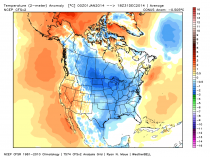
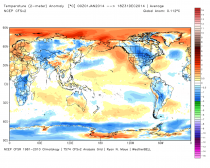
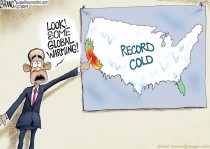
_thumb.png)
